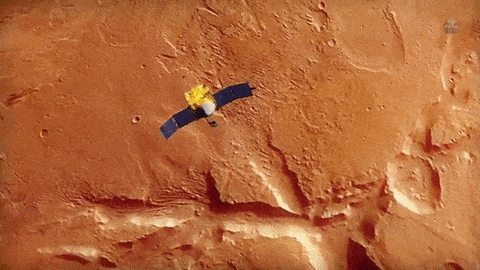What is CubeSat?
CubeSats are a class of research spacecraft called nanosatellites. They provide low-cost opportunities for small satellite payloads to fly on rockets planned for upcoming launches. Small satellites, including CubeSats, are playing an increasingly larger role in exploration, technology demonstration, scientific research, and educational investigations here at NASA.
MAVEN Mission
The Mars Atmosphere and Volatile EvolutioN (MAVEN) mission is part of our Mars Scout program. This spacecraft launched in November 2013 and is exploring the Red Planet’s upper atmosphere, ionosphere, and interactions with the sun and solar wind.
The purpose of the MAVEN mission is to determine the state of the upper atmosphere of Mars, the processes that control it, and the overall atmospheric loss that is currently occurring. Specifically, MAVEN is exploring the processes through which the top of the Martian atmosphere can be lost to space. Scientists think that this loss could be important in explaining the changes in the climate of Mars that have occurred over the last four billion years.
Japan’s Akatsuki orbiter
The down-to-business names for Akatsuki - which means “Dawn” or “Daybreak” in Japanese - are Venus Climate Orbiter and Planet-C. Akatsuki is Japan’s third deep space mission. At Venus, the orbiter will study Venusian meteorology. JAXA defines the mission’s goals as:
- Observing Venus as a whole to understand its perpetual cloud layer, deep atmosphere, and surface
- Close observations of cloud structures and convection
- Searching for signs of lightning and airglow




0 Comments